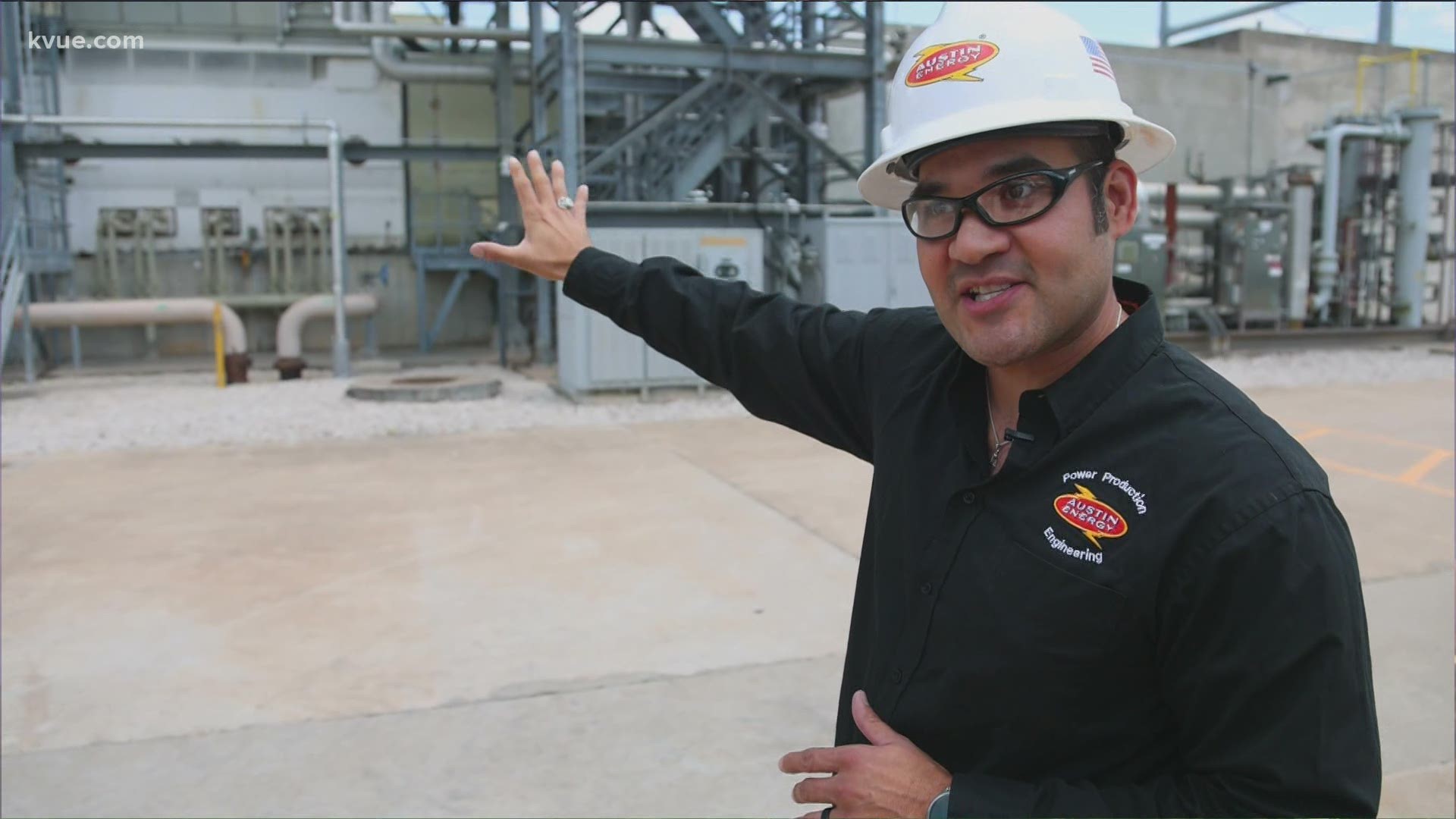AUSTIN, Texas — ERCOT has been on Texans' minds quite a bit in 2021, which is why we're taking a look at the different ways Texas creates energy for the grid.
This time we took a look at natural gas from two different natural gas power plants operated by Austin Energy, one being the Decker Creek natural gas power plant in northeast Austin.
Jack Borsch with Austin Energy can help explain the process of how it all works.
"It's all anchored on the top, and all this steal supports the boiler, and as it gets hot it grows down," he said.
When it gets hot, as the natural gas is burned, it superheats the air around it then boils water into steam. That steam is what actually turns the turbine, creating the electricity.
"So if you get on the inside, it's basically an open room. You can look to the top on the outside, a series of tubes. The tubes are filled with water," he said. "We capture the steam at the top of the drum, take it out of there. We'll take it over to the steam turbine, spin the steam turbine, bring it back into the boiler, do a reheat night, take it back over to the steam turbine."
Then that steam is turned back into treated water that's used again for the next cycle.
"We produce the electrons through the exciter. We send it out to the yard. It's really that simple," he said. "The substation then takes it out into the distribution and transmission lines. That then goes to another substation, which then lowers the voltage and we take that into your house."
At Decker, it's a traditional generator and Austin Energy's oldest. So what about one of the newer ones – how are they different?
Luis Cordova is the plant manager of Sand Hill Energy Center, which was built in 2001 in Del Valle. The process here starts out the same as Decker.
"In 2004 we built this combined cycle, so this is called a one-on-one combined cycle," said Cordova.
They use the combined cycle to get more energy production by taking the output and running it through one more turbine.
"So those hot exhaust condensate and steam gasses," he said. "We run those through a steam turbine, and that is how we get our secondary megawatt generation."
They say this process doubles the power that this site creates.
"On the grand scheme of things, it helps us be more efficient and more reliable. Since it's a new system, it's more reliable," added Cordova.
Reliability in power is something Texans want.
They say Decker Creek can produce power for 86,000 homes per day and Sandhill is close to 120,000 homes, helping feed Texas' power grid as temperatures heat up and demand rises.
If you want to see more on how wind energy in Texas is produced, click here.
PEOPLE ARE ALSO READING:

